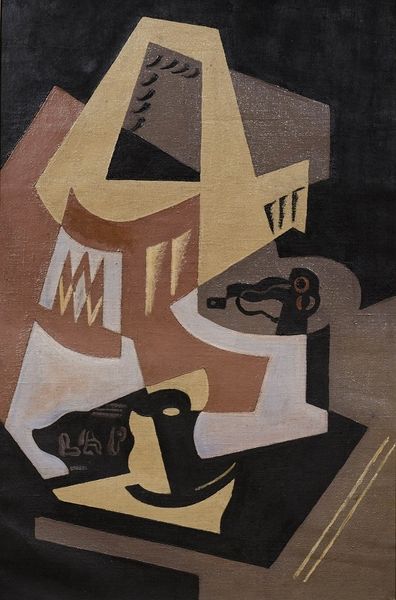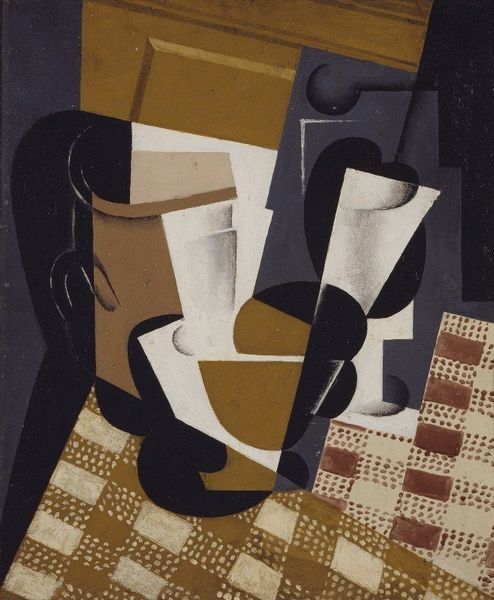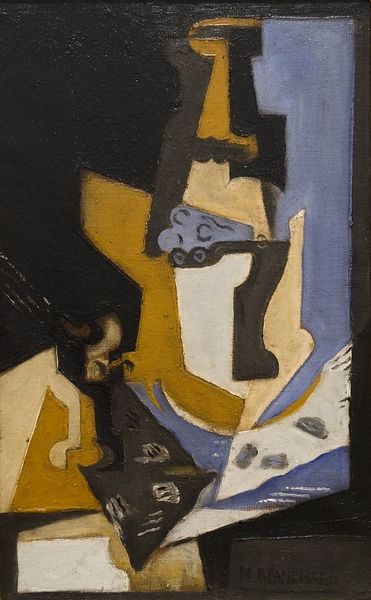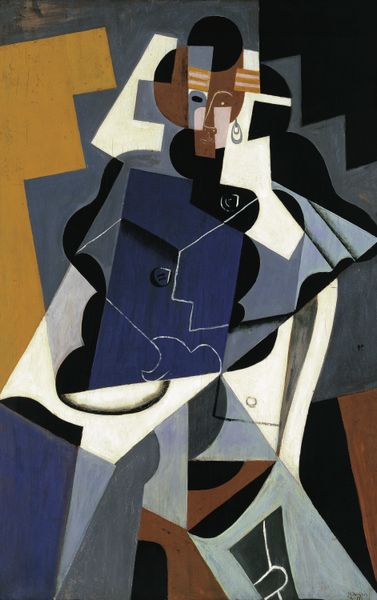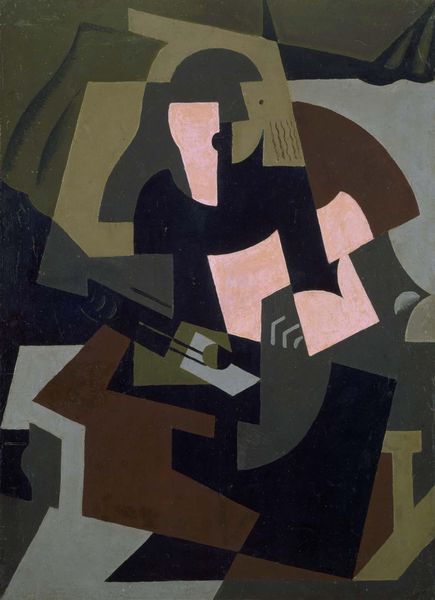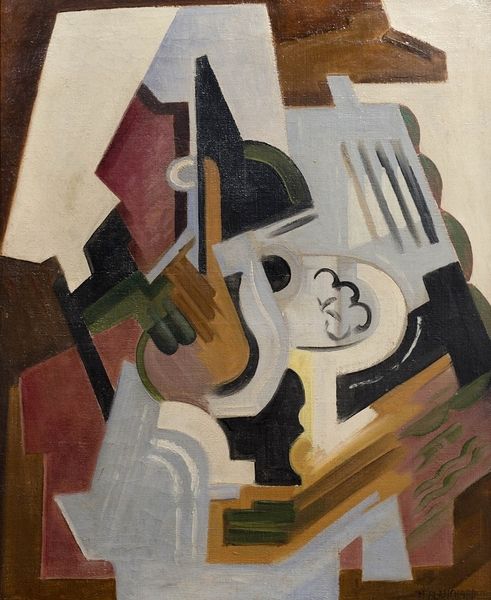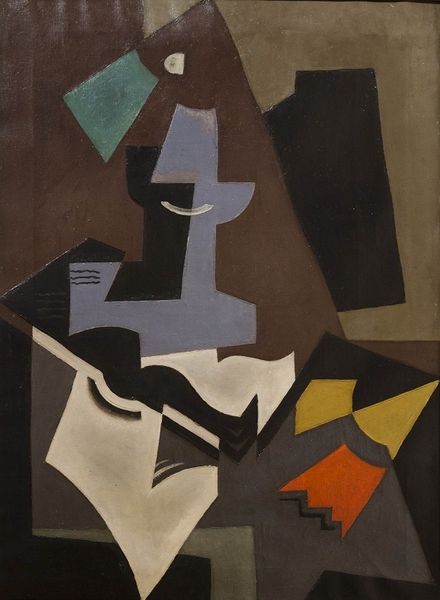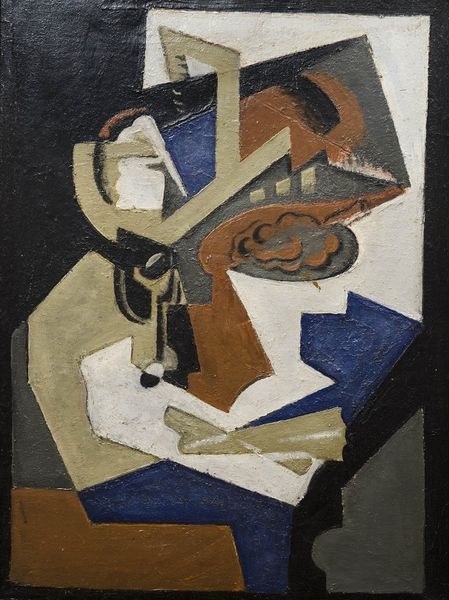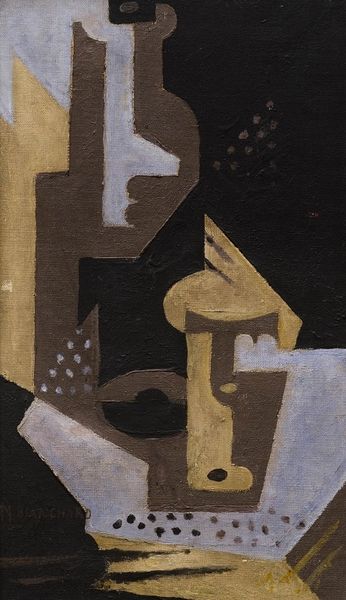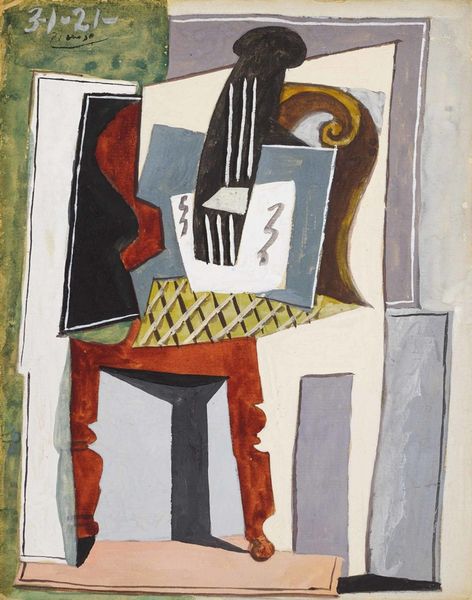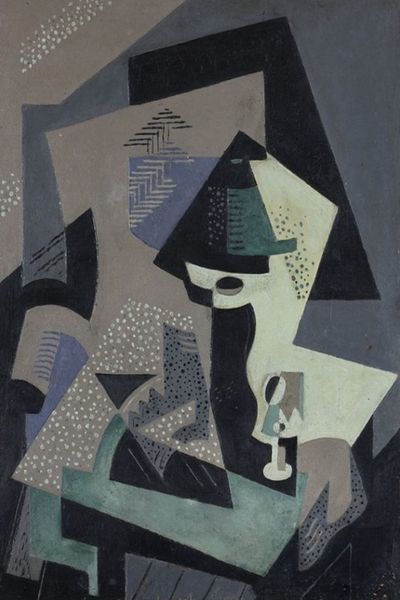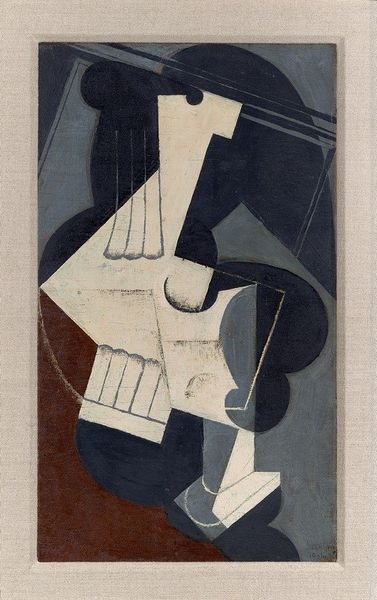
painting, oil-paint
#
portrait
#
cubism
#
painting
#
oil-paint
#
oil painting
#
geometric
#
abstraction
#
painting art
#
modernism
Copyright: Public domain
Curator: Well, the first impression I get is that this is unsettling. All those sharp angles and somber colors evoke anxiety, but in a rather interesting way. Editor: You’re responding to María Blanchard's “Mujer Sentada Composicion Con Mancha Roja," painted in 1916. It’s an oil painting, and it's an exemplary work of cubism. Curator: Cubism, of course! You can really see it in the way she fractures and rearranges the figure, almost as if dissecting the sitter’s identity through geometric planes. The interplay between dark and light also emphasizes the fragmentation. Editor: Exactly. Considering the context of early 20th century Europe, one can argue that this piece, though seemingly about form, really conveys the social upheavals of the time and how it particularly impacted women in artistic spaces. Blanchard was working during a time of significant social change, marked by both new opportunities for women, and persistent structural inequalities. Curator: That makes sense. And the 'red stain,' which serves as the central focus point, is an interesting formal decision, breaking up the otherwise monochromatic scheme. Editor: The red stain is rather central. Some scholars have linked this use of stark color against more neutral tones to broader issues of class and gender dynamics in European society at the time. What statements do you think the female figure is making in her portrait, for example? Curator: It’s so stylized and distorted that reading a direct 'statement' seems futile. But that, in itself, is the point, perhaps? It defies conventional portraiture and rejects easy readings. It’s through the abstract visual vocabulary—the composition, the interplay of light and shadow, and the overall structure—that the painting communicates. Editor: True. In many ways it resists any clear interpretation. In deconstructing form, it's making an effort to reconstruct not just identity, but visibility itself within this tumultuous landscape of cultural change. Curator: It seems this particular canvas prompts us to reassess traditional understandings of female representation, even through such rigid geometry. Editor: Precisely! And from a semiotic standpoint, one may read this artwork to highlight larger struggles of the feminine. Thank you, the visual experience was certainly compelling.
Comments
No comments
Be the first to comment and join the conversation on the ultimate creative platform.
